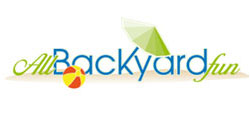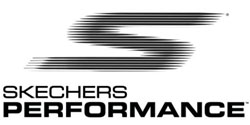Posts tagged students
DOZENS OF CU STUDENTS TO DISPLAY SERVICE LEARNING PROJECTS ON APRIL 25
Apr 22nd
Stone, a senior molecular, cellular and developmental biology major, is one of dozens of CU-Boulder students who will have booths at an event highlighting local service learning projects they completed this spring as part of the Program for Writing and Rhetoric’s “Writing Initiative for Service and Engagement” project.
The free, public event will be held Monday, April 25, from 3 to 5 p.m. in the University Memorial Center, room 235. Anne K. Heinz, associate vice-chancellor for outreach and engagement, will give the keynote address.
“During the semester, I helped students with biology papers who were explaining complicated processes, while also helping students who could barely speak English write simple essays,” Stone said. “Throughout this experience I gained a deeper appreciation of the education I have received. It also has motivated me to keep furthering myself and to keep giving back as well.”
Each semester about 350 CU-Boulder students participate in community-based writing courses through the Program for Writing and Rhetoric, contributing well over 5,000 hours of their time to local community and nonprofit organizations, according to CU-Boulder Senior Instructor Sally Green, who teaches a course that partners her students with Arapahoe Ridge High School and Boulder High School students.
“This experience gives students the opportunity to develop and apply their communication skills in authentic contexts,” Green said. “They complete valuable projects for their community partners and gain an understanding of social, environmental and economic issues which informs their entire college education.”
In Green’s service learning class, “Writing on Science and Society,” her students tutor Boulder at-risk high school students in math and science for a total of 15 hours throughout the semester.
“They bring their own recent experience as high school students and their expertise and enthusiasm about their subjects to the tutoring experience,” Green said.
Students who take Program for Writing and Rhetoric service-learning courses learn about a number of issues including sustainability, food, education, the elderly, poverty and hunger while gaining practical experience in grant writing and document design. They also work with an array of organizations: schools and afterschool programs, community gardens, homeless shelters, organic farms, food banks and Boulder Parks and Recreation.
“Through the coursework, we want students to gain an understanding of a social issue, community dynamics, problem solving and written advocacy,” Green said.
After graduation on May 6, Stone will work as a research technician in a campus laboratory. She then plans to apply for medical school, with the long-term goal of being a surgeon.
More than 13,000 CU-Boulder students participate in some form of community service each year, and more than 3,500 are engaged in academic service learning, a teaching strategy that integrates meaningful community service with instruction. For more information about CU-Boulder’s civic engagement efforts visit http://www.colorado.edu/news/reports/civicengagement/.
-CU-
CU ROLE IN DREAM CHASER SPACECRAFT TO CONTINUE UNDER NEW NASA GRANT TO SIERRA NEVADA CORP.
Apr 22nd
The Louisville, Colo.-based aerospace company was one of four companies to receive grants this week from NASA’s Commercial Crew Development program. The grant is a follow-on to Sierra Nevada’s NASA grant of $20 million for the Dream Chaser last year.
Roughly the size of a business jet, the 30-foot-long Dream Chaser is slated to launch vertically on an Atlas V rocket and land horizontally on conventional runways, similar to the much larger space shuttle. The spacecraft is based on NASA’s earlier HL-20 lifting body design.
As part of its continuing development of the Dream Chaser, Sierra Nevada will fund “human rating” research led by CU-Boulder Professor David Klaus of the aerospace engineering sciences department, according to Jim Voss, a CU faculty member and vice president of Sierra Nevada. Human rating research is aimed at developing a methodology for evaluating safety and operational aspects of spacecraft intended to transport crew.
“This is a great industry-academia collaboration that combines providing design input for the Dream Chaser to Sierra Nevada with four related thesis topics being pursued by Ph.D. students in our program,” Klaus said.
Sierra Nevada also will sponsor and fund a continuation of the CU-Boulder graduate student project involving Dream Chaser displays and controls, Voss said. The graduate project is focused on cockpit design and ergonomics evaluation to determine the best placement and type of controls to be used by the crew. The students are being advised by Voss and his colleague Joe Tanner, both of whom joined the CU-Boulder faculty after retiring as NASA astronauts.
Klaus, who heads the aerospace department’s bioastronautics focus area, has set up a laboratory in CU-Boulder’s Engineering Center housing three mock-ups of the spacecraft. One is a full-scale model of the Dream Chaser based on the earlier HL-20 design that is on loan from NASA to Sierra Nevada; another is a 15 percent scale model unit that was used for flight testing last December, and the third is the cockpit section being used to evaluate the layout for instrument displays and controls. A “public day” is being planned so that the community will have a chance to view the project.
“The University of Colorado and Sierra Nevada Corporation have formed a partnership that allows use of the tremendous intellectual resources of students and professors to help develop a commercial human spacecraft, the Dream Chaser,” said Voss. “I’m really pleased to continue the work that was started last year and look forward to more student involvement with this exciting project.”
-CU-
April 18, 2011 MIT PHYSICS NOBEL LAUREATE FRANK WILCZEK TO GIVE CU-BOULDER’S GAMOW LECTURE
Apr 18th
April 18, 2011
MIT PHYSICS NOBEL LAUREATE FRANK WILCZEK
TO GIVE CU-BOULDER’S GAMOW LECTUREMassachusetts Institute of Technology Professor Frank Wilczek, who shared the 2004 Nobel Prize in physics, will give the 46th George Gamow Memorial Lecture at the University of Colorado Boulder on Tuesday, April 26.
Free and open to the public, the talk is titled “Anticipating a New Golden Age: A Vision and Its Fiery Trial at the Large Hadron Collider.” Wilczek will describe the Large Hadron Collider, or LHC, and how it will test new phenomena and ambitious ideas. The talk will be held at 7:30 p.m. in Macky Auditorium and is intended for a general audience.
The LHC sends protons and charged atoms whizzing around a 17-mile underground loop located on the border of France and Switzerland at 11,000 times per second — nearly the speed of light. Located at the European Organization for Nuclear Research, the collider can smash particles together at energy levels seven times higher than the previous record by such accelerators.
Scientists are using the LHC to attempt to recreate conditions immediately following the Big Bang, searching for answers about mysterious dark matter, dark energy, gravity and the fundamental laws of physics. The experiments may even shed light on the possibility that other dimensions exist, according to physicists.
Wilczek says future generations may view the LHC as the defining symbol of our culture, analogous to the pyramids of Egypt. The LHC project involves roughly 10,000 people from 60 countries, including more than 1,700 scientists, engineers, students and technicians from 94 American universities. Roughly 10 faculty, postdoctoral researchers and graduate students from CU-Boulder’s physics department have been involved in LHC research and development.
Wilczek shared the Nobel Prize in physics with David Gross and David Politzer for the discovery of asymptotic freedom in the theory of the strong interaction, research he conducted as a 21-year-old graduate student at Princeton University.
Wilczek has received numerous awards, including a 1982 McArthur Fellowship “genius grant,” the 2005 King Faisal International Prize for Science and the 2003 Lilienfeld Prize of the American Physical Society. He is a member of the National Academy of Sciences and the American Academy of Arts and Sciences.
The George Gamow lecture series started in 1971 and honors the late CU-Boulder physics professor who was pivotal in developing the big bang theory of the creation of the universe. He also was known for his many books popularizing science.
For more information on Wilczek and his work visit the Colorado Arts and Sciences Magazine at http://artsandsciences.colorado.edu/magazine/2011/04/nobel-laureate-to-deliver-gamow-lecture/.
-CU-





















